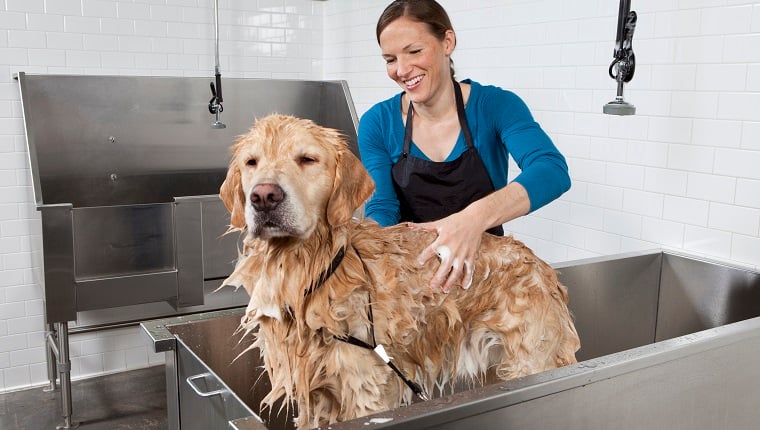 Bathing your dog is an essential part of maintaining their hygiene and overall health. However, it can be a challenging task, especially if your dog does not enjoy water or becomes anxious during the bathing process. In this article, we will discuss some dog bathing techniques that can help make the process easier and less stressful for both you and your furry friend.
Bathing your dog is an essential part of maintaining their hygiene and overall health. However, it can be a challenging task, especially if your dog does not enjoy water or becomes anxious during the bathing process. In this article, we will discuss some dog bathing techniques that can help make the process easier and less stressful for both you and your furry friend.
First and foremost, it’s important to choose the right location for your dog’s bath. Ideally, you should bathe your dog in a warm and quiet area, such as a bathroom or a utility room. Avoid bathing your dog outside during cold weather or in areas with strong winds, as this can cause them to become chilled and uncomfortable.
It’s also important to place a non-slip mat or towel at the bottom of the bathing area to prevent your dog from slipping and injuring themselves. You should also get the products like dog skin conditioner and shampoo before you start cleaning your pooch.
Before bathing your dog, it’s a good idea to brush their coat thoroughly to remove any loose hair, dirt, or debris. This will also help to prevent tangles and mats from forming during the bathing process. If your dog has long hair, you may need to use a detangling spray or conditioner to help loosen any knots or tangles.
When it comes to bathing products, it’s important to choose a shampoo that is specifically formulated for dogs. Human shampoos can be too harsh for a dog’s sensitive skin and can cause irritation or dryness. Additionally, you should choose a shampoo that is appropriate for your dog’s coat type and skin condition. For example, if your dog has dry or sensitive skin, you may want to choose a moisturizing shampoo with natural ingredients such as oatmeal or aloe vera.
Once you’ve selected the right shampoo, it’s time to start the bathing process. Begin by wetting your dog’s coat thoroughly with warm water. You can use a hand-held showerhead or a bucket to pour water over your dog. It’s important to avoid getting water in your dog’s ears, eyes, or nose, as this can cause discomfort and irritation.
Next, apply the shampoo to your dog’s coat and massage it in gently. Be sure to lather up all areas of your dog’s body, including their legs, belly, and tail. You may need to use a sponge or washcloth to reach harder-to-reach areas, such as under your dog’s chin or between their toes.
Once you’ve finished shampooing your dog, rinse them off thoroughly with warm water. It’s important to remove all traces of shampoo from your dog’s coat, as leftover residue can cause skin irritation or itchiness. You may need to rinse your dog several times to ensure all the shampoo has been removed.
If your pup has long coat or is suffering from any skin condition like dryness, itchiness, or irritation, consider using a dog skin conditioner after the shampoo. A conditioner helps soothe the skin and smoothen the coat, giving your pet relief from any discomfort and a shiny-looking coat.
After your dog’s bath, it’s important to dry them off thoroughly. You can use a towel or a blow dryer on a low heat setting to dry your dog’s coat. If your dog has long hair, you may need to use a brush to detangle their coat as you dry them. Be sure to avoid leaving your dog in a drafty or cold area, as this can cause them to become chilled.
In conclusion, bathing your dog can be a challenging task, but with the right techniques and products, it can be a rewarding experience for both you and your furry friend. Remember to choose the right location, use the appropriate bathing products like a good dog skin conditioner, and be gentle and patient with your dog during the process. With a little bit of practice and patience, you can help to keep your dog’s coat clean, healthy, and shiny.